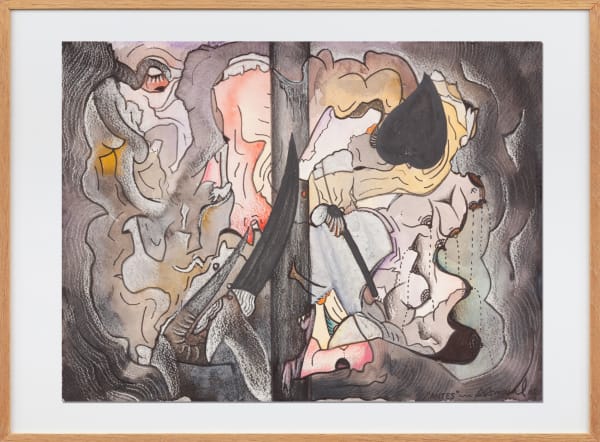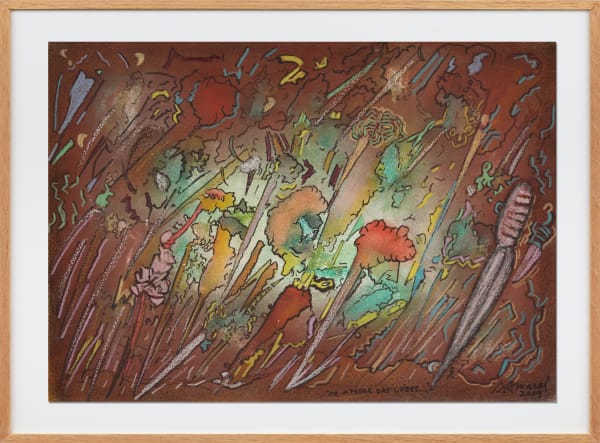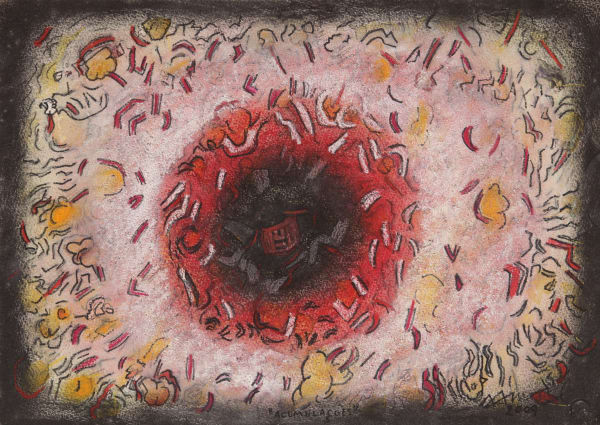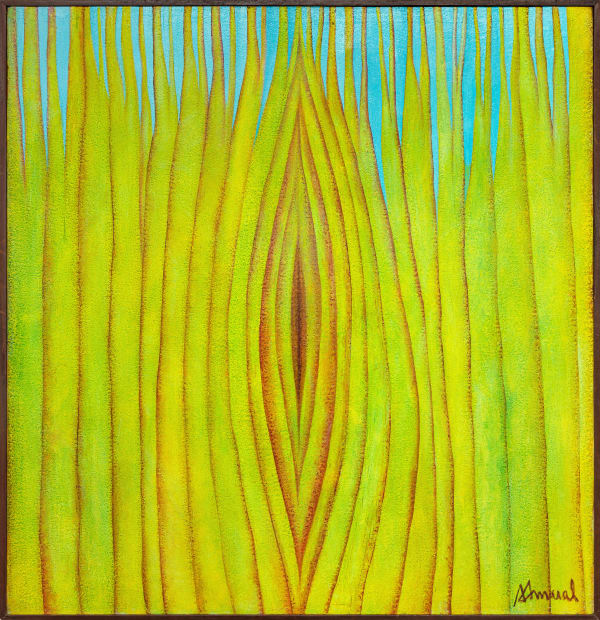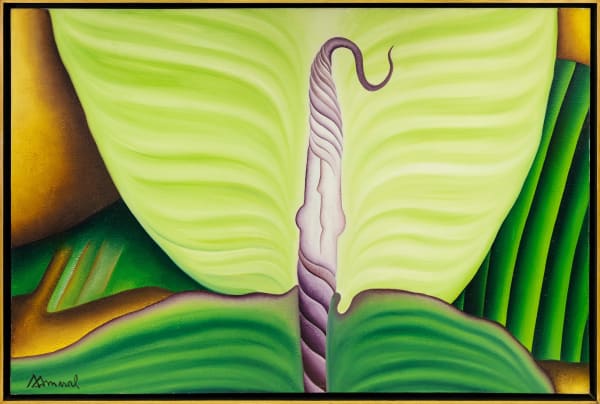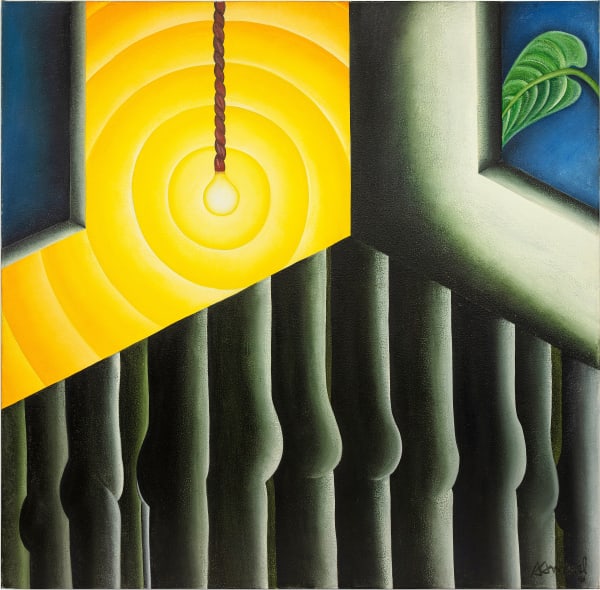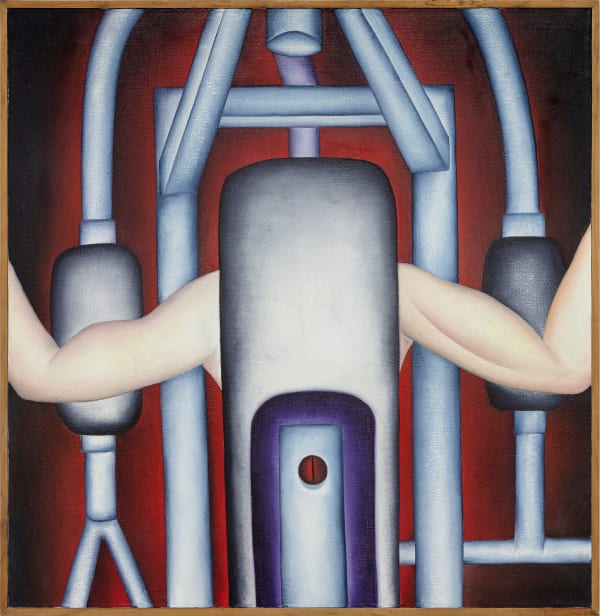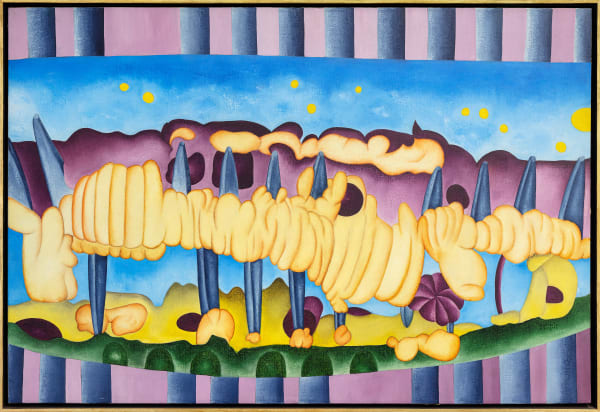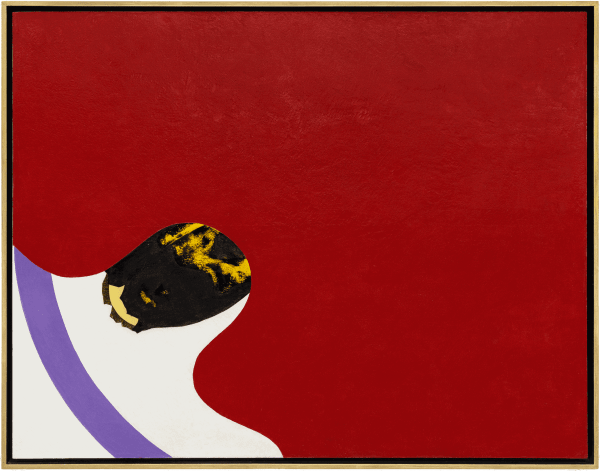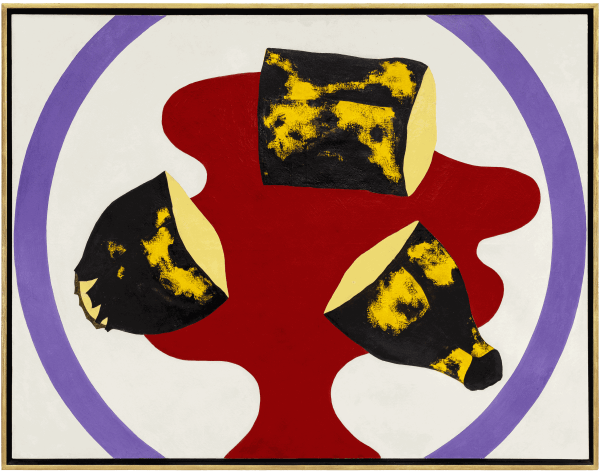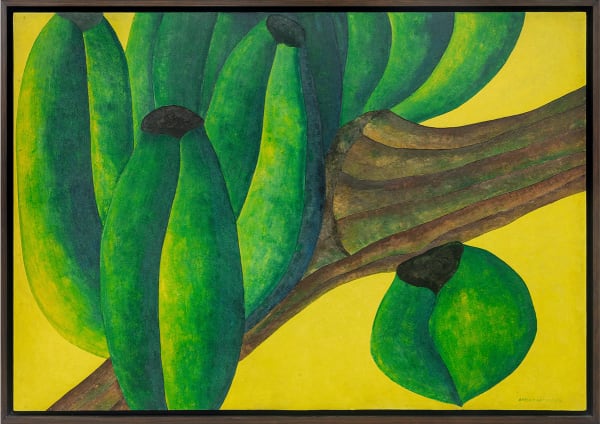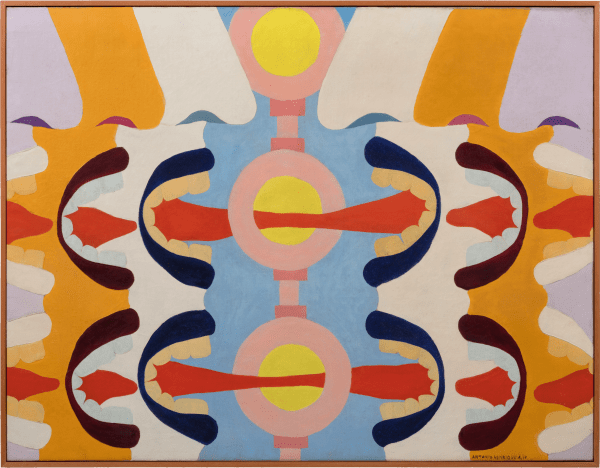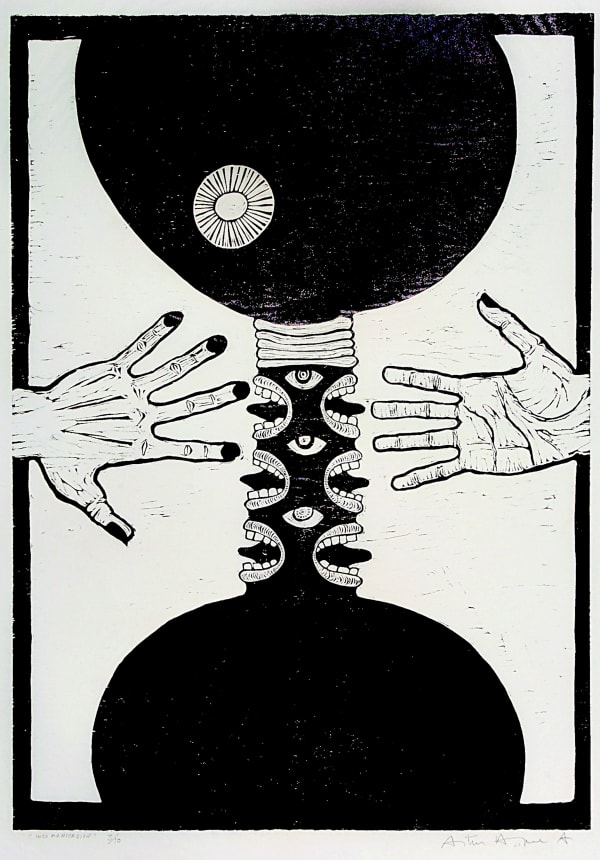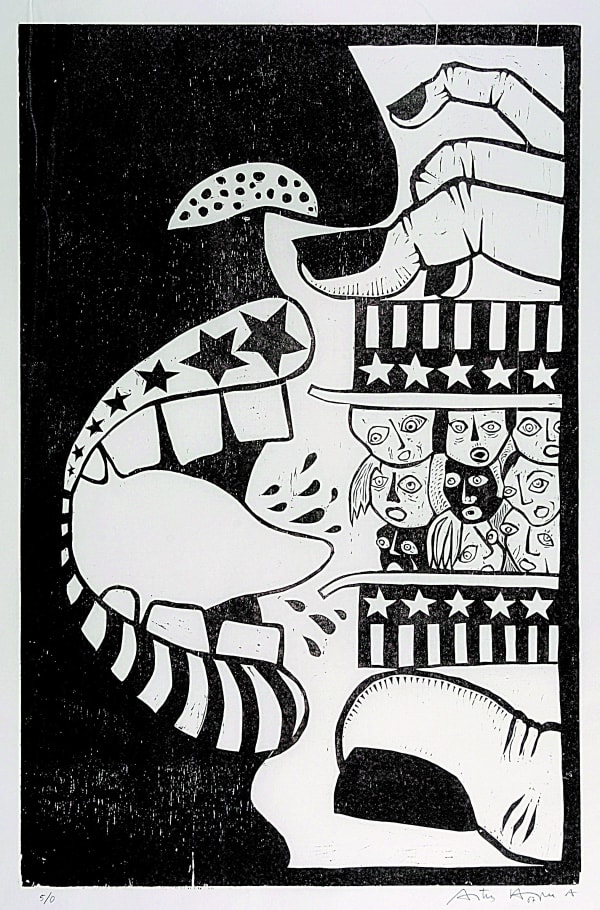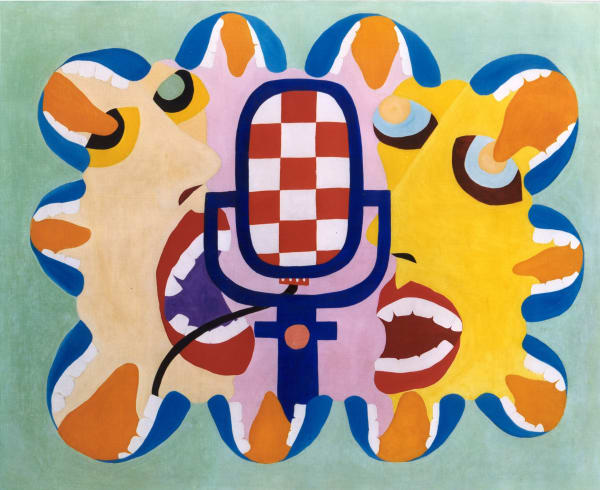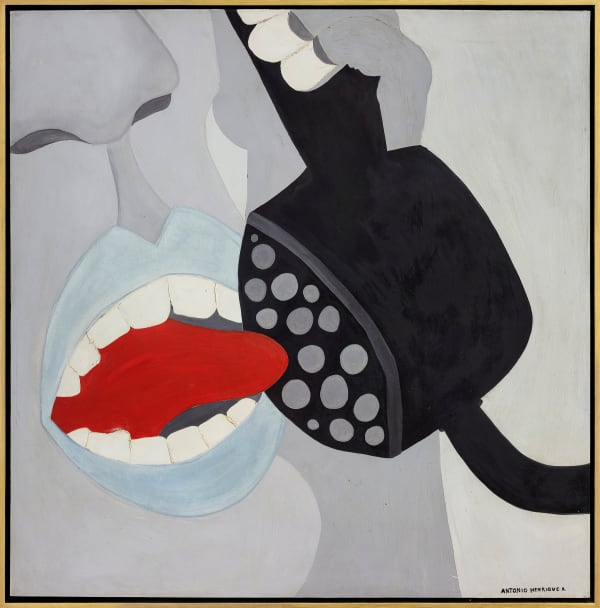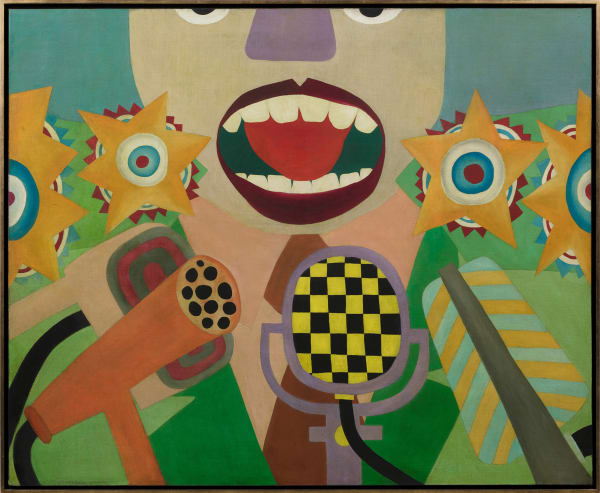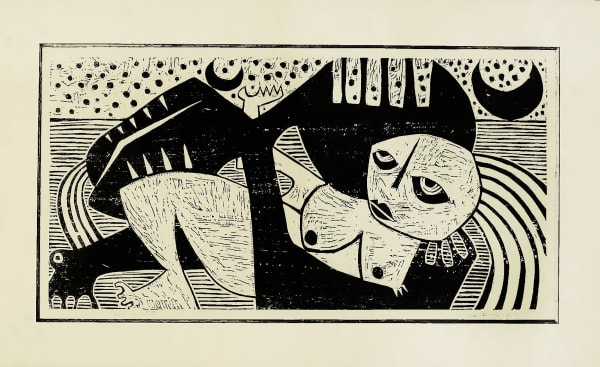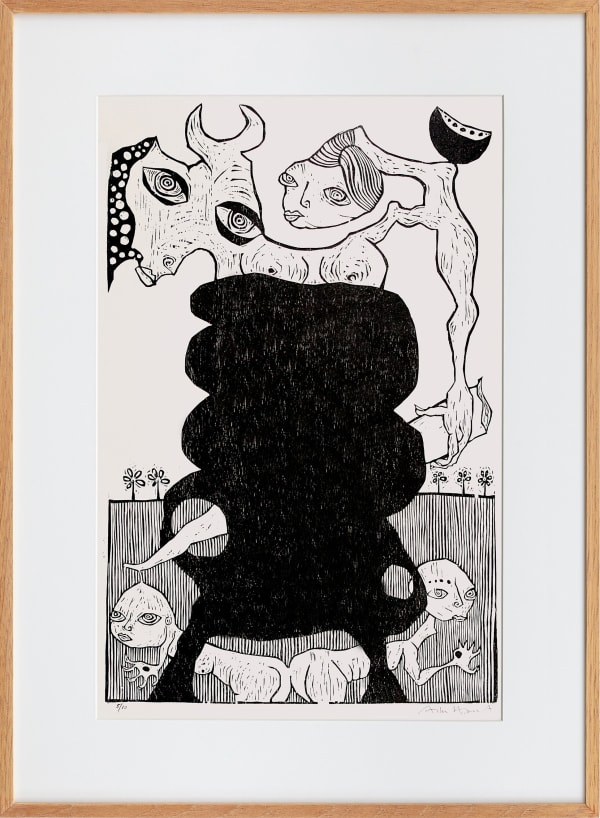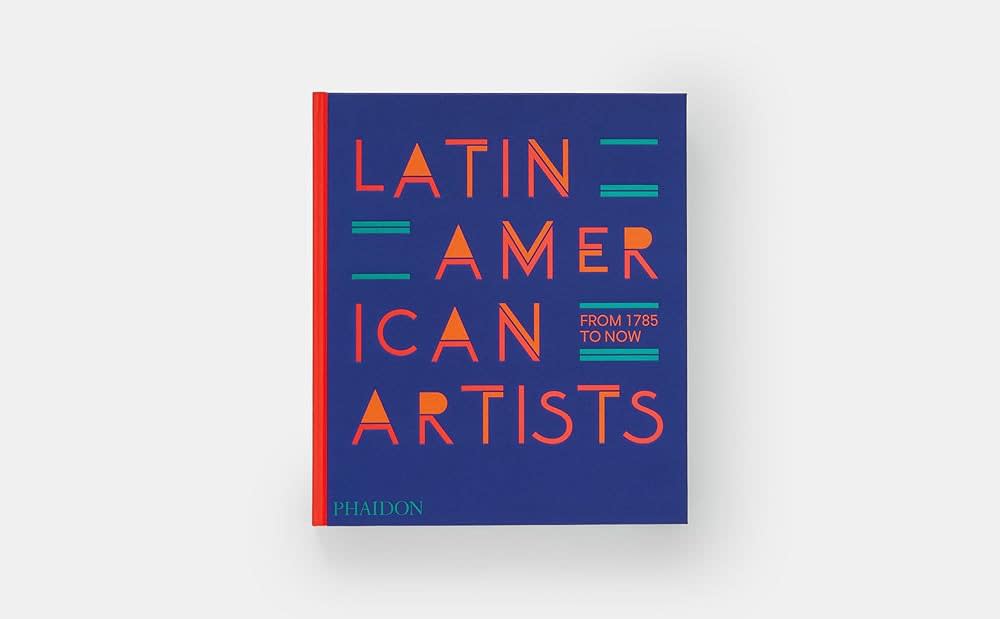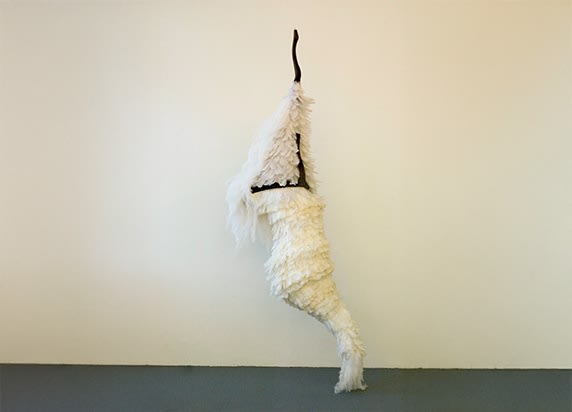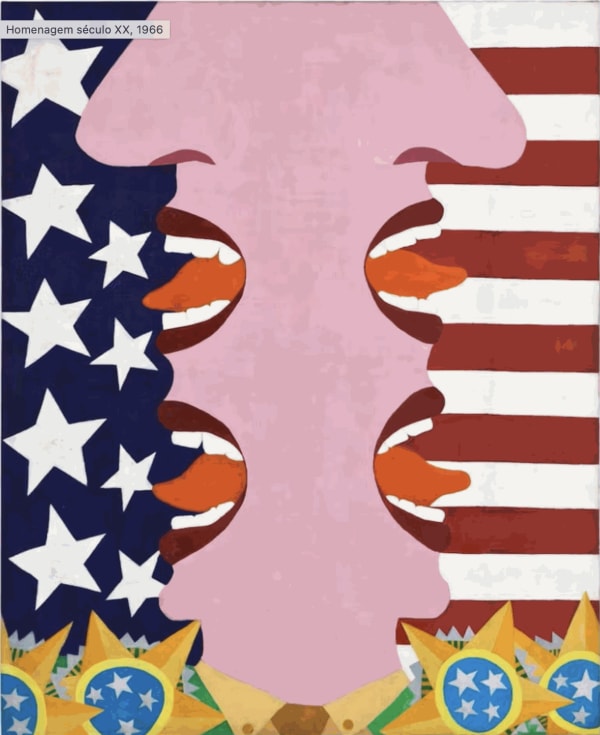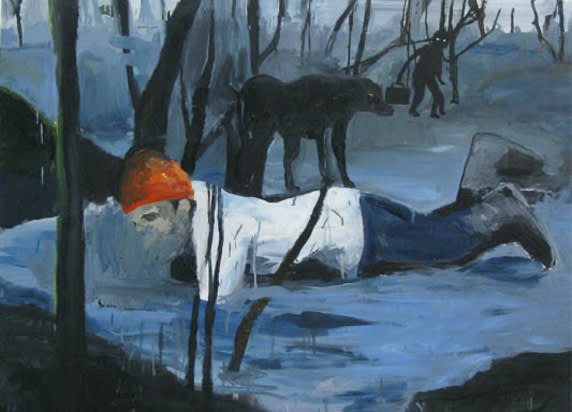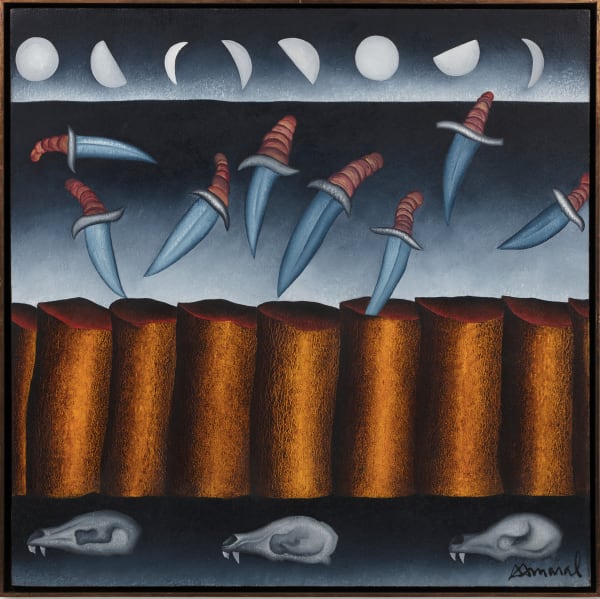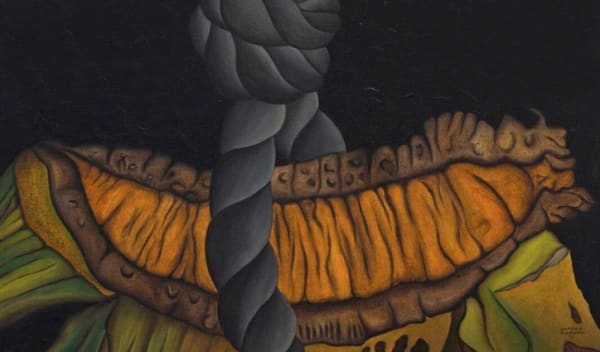Antonio Henrique Amaral
Antonio Henrique Amaral brought a singular voice to Brazilian and Latin American art of the second half of the 20th century. Born in 1935, he was part of the generation that came into its own under the authoritarian rule of the military dictatorship installed in Brazil in 1964, having produced some of the most incisive allegories from that period. His visceral work dealt with political violence, existential discontent and erotic desire with the same intensity. His experimental approach challenged hackneyed lemmas concerning chromatic composition, the treatment of surfaces and stylistic cohesion. His blend of visceral attitude with experimental daring makes him not only a key figure in the history of Brazilian and Latin American art, but also an influential artist for the young generations that defy normativities and authoritarianisms.
-
 Antes, 2008Mais detalhes
Antes, 2008Mais detalhes -
 Antes, durante e depois... da queda..., 2008Mais detalhes
Antes, durante e depois... da queda..., 2008Mais detalhes -
 Ao apagar das luzes..., 2000Mais detalhes
Ao apagar das luzes..., 2000Mais detalhes -
 Acumulações, 2000Mais detalhes
Acumulações, 2000Mais detalhes -
 Alta, bem alta velocidade..., 2000Mais detalhes
Alta, bem alta velocidade..., 2000Mais detalhes -
 Ninguém sabe como começou, 2000Mais detalhes
Ninguém sabe como começou, 2000Mais detalhes -
 Noivas, línguas, nuvens..., 1998Mais detalhes
Noivas, línguas, nuvens..., 1998Mais detalhes -
 FLORESTA 3, 1997Mais detalhes
FLORESTA 3, 1997Mais detalhes -
 O nascimento da folha, 1997Mais detalhes
O nascimento da folha, 1997Mais detalhes -
 OS CORPOS E A LUZ, 1996Mais detalhes
OS CORPOS E A LUZ, 1996Mais detalhes -
 Torsos IX, 1995Mais detalhes
Torsos IX, 1995Mais detalhes -
 Torsos armados, 1995Mais detalhes
Torsos armados, 1995Mais detalhes -
 Fim de jogo...?, 1995Mais detalhes
Fim de jogo...?, 1995Mais detalhes -
 Casal de novo, 1995Mais detalhes
Casal de novo, 1995Mais detalhes -
 Armas, 1992Mais detalhes
Armas, 1992Mais detalhes -
 A ameaça, 1991Mais detalhes
A ameaça, 1991Mais detalhes -
 Face with mind of her own, 1988Mais detalhes
Face with mind of her own, 1988Mais detalhes -
 FRAGMENTOS/MÁQUINA, 1979Mais detalhes
FRAGMENTOS/MÁQUINA, 1979Mais detalhes -
 MÁQUINA II, 1979Mais detalhes
MÁQUINA II, 1979Mais detalhes -
 Corpo máquina, 1979Mais detalhes
Corpo máquina, 1979Mais detalhes -
 Figura / Fundo, 1978Mais detalhes
Figura / Fundo, 1978Mais detalhes -
 A Casa de Macunaíma VII, 1977Mais detalhes
A Casa de Macunaíma VII, 1977Mais detalhes -
 Garfo na folha, 1977Mais detalhes
Garfo na folha, 1977Mais detalhes -
 Pressões, repressões, 1976Mais detalhes
Pressões, repressões, 1976Mais detalhes -
 No metálico, as janelas , 1976Mais detalhes
No metálico, as janelas , 1976Mais detalhes -
 Sob o céu azul, 1975Mais detalhes
Sob o céu azul, 1975Mais detalhes -
 Campo de batalha 19, 1974Mais detalhes
Campo de batalha 19, 1974Mais detalhes -
 Campo de batalha 30, 1974Mais detalhes
Campo de batalha 30, 1974Mais detalhes -
 BANANA, 1971Mais detalhes
BANANA, 1971Mais detalhes -
 BANANAS, 1971Mais detalhes
BANANAS, 1971Mais detalhes -
 Untitled, 1969Mais detalhes
Untitled, 1969Mais detalhes -
 Bananas, 1969Mais detalhes
Bananas, 1969Mais detalhes -
 Boa vizinhança, 1968Mais detalhes
Boa vizinhança, 1968Mais detalhes -
 DAS BOCAS, 1967Mais detalhes
DAS BOCAS, 1967Mais detalhes -
 MONUMENTO SÉC. XX e XXI, 1967Mais detalhes
MONUMENTO SÉC. XX e XXI, 1967Mais detalhes -
 INCOMUNICAÇÃO, 1967Mais detalhes
INCOMUNICAÇÃO, 1967Mais detalhes -
 O APETITE, 1967Mais detalhes
O APETITE, 1967Mais detalhes -
 Sexus, 1967Mais detalhes
Sexus, 1967Mais detalhes -
 Pop Coroa, 1966Mais detalhes
Pop Coroa, 1966Mais detalhes -
 Boca, 1966Mais detalhes
Boca, 1966Mais detalhes -
 O salvador, 1966Mais detalhes
O salvador, 1966Mais detalhes -
 O discurso ou El tirano, 1966Mais detalhes
O discurso ou El tirano, 1966Mais detalhes -
 A Barca, 1962Mais detalhes
A Barca, 1962Mais detalhes -
 Amantes, 1961Mais detalhes
Amantes, 1961Mais detalhes -
 Untitled, 1961Mais detalhes
Untitled, 1961Mais detalhes -
 Na Torre , 1959Mais detalhes
Na Torre , 1959Mais detalhes
-

Campo de batalha: Antonio Henrique Amaral 90 anos
Curated by José Augusto Ribeiro 23 August - 27 September 2025“I believed that ideologies, politics, the social events of the time, my love life, my feelings, the technique of printmaking, restraint in line and drawing, existential doubts – in short,...Read more -

ANTONIO HENRIQUE AMARAL: O DISCURSO
MITCHELL-INNES & NASH, NEW YORK, USA 9 March - 15 April 2023Read more -

LANDSCAPE
2 - 23 July 2022Read more -

Antonio Henrique Amaral . Inside out
Casa Triângulo, São Paulo, Brazil 18 September - 13 November 2021Antonio Henrique Amaral: Inside Out Curated by Raphael Fonseca and Pollyana Quintella. Multiple and polyphonic, Antonio Henrique Amaral strove to construct an oeuvre that would defy univocal interpretations. His more...Read more -

Antonio Henrique Amaral: Aglomeração
Tomie Ohtake Institute, São Paulo, Brazil 7 November 2020 - 7 February 2021Read more -

Antonio Henrique Amaral
Pinacoteca do Estado de São Paulo, São Paulo, Brazil 7 December 2013 - 23 February 2014Read more
-

ANTONIO HENRIQUE AMARAL . POP BRASIL: VANGUARDIA Y NUEVA FIGURACIÓN, 1960s-70s
MALBA - MUSEO DE ARTE LATINOAMERICANO DE BUENOS AIRES, BUENOS AIRES, ARGENTINA 07 NOVEMBER 2025 - 02 FEBRUARY 2026 Read more -

ANTONIO HENRIQUE AMARAL AND VÂNIA MIGNONE . NADA COMO UM DIA DEPOIS DE OUTRO
MUSEU DE ARTE CONTEMPORÂNEA DE CAMPINAS, CAMPINAS, BRAZIL 04 OCTOBER 2025 - 12 FEBRUARY 2026GROUP CURATED BY GABRIEL ZACARIAS 04 OCTOBER 2025 - 12 FEBRUARY 2026Read more -

ZÉ CARLOS GARCIA . REALINHAMENTO - TERRA UNA
CC - LADO B, RIO DE JANEIRO, BRAZIL 01 AUGUST 2025 - 09 AUGUST 2025GROUP CURATED BY NADAM GUERRA, PAULA BORGHI AND DANILO NÓBREGA 01 AUGUST 2025 - 09 AUGUST 2025Read more -

ANTONIO HENRIQUE AMARAL . POP BRASIL: VANGUARDA E NOVA FIGURAÇÃO, 1960-70
PINA CONTEMPORÂNEA, SÃO PAULO, BRAZIL 31 MAY 2025 - 05 OCTOBER 2025GROUP Curated by Pollyana Quintella and Yuri Quevedo 31 MAY 2025 - 05 OCTOBER 2025Read more -

ANTONIO HENRIQUE AMARAL, EDUARDO BERLINER AND SANDRA CINTO . MAM SÃO PAULO: ENCONTROS ENTRE O MODERNO E O CONTEMPORÂNEO
GALERIA DE ARTE DO SESI (CENTRO CULTURAL FIESP), SÃO PAULO, BRAZIL 25 MARCH 2025 - 08 JUNE 2025GROUP CURATED BY CAUÊ ALVES AND GABRIELA GOTODA 25 MARCH 2025 - 08 JUNE 2025Read more -

ANTONIO HENRIQUE AMARAL . VAI, VAI, SAUDADE
MUSEO MADRE, NAPOLI, ITALY 04 JULY 2024 - 04 NOVEMBER 2024GROUP CURATED BY CRISTIANO RAIMONDIRead more -

ANTONIO HENRIQUE AMARAL .TERRITORIOS: ARTE CONTEMPORÁNEO LATINAMERICANO EN LA COLECCIÓN JORGE M. PÉREZ
CENTRO ANDALUZ DE ARTE CONTEMPORÁNEO, SEVILLA, SPAIN 02 MARCH 2024 - 01 SEPTEMBER 2024GROUP CURATED BY JIMENA BLÁZQUEZ ABASCAL 02 MARCH 2024 - 01 SEPTEMBER 2024Read more -

ANTONIO HENRIQUE AMARAL AND ROBERTO MAGALHÃES . POLÍTICA E VANGUARDA 1964/85 NA COLEÇÃO LILI E JOÃO AVELAR
MUSEU INIMÁ DE PAULA, BELO HORIZONTE, BRAZIL 17 APRIL 2024 - 18 AUGUST 2024GROUP CURATED BY JOÃO AVELAR 17 APRIL 2024 - 18 AUGUST 2024Read more -

ANTONIO HENRIQUE AMARAL AND SANDRA CINTO . NARRATIVAS EM PROCESSO: LIVROS DE ARTISTA NA COLEÇÃO ITAÚ CULTURAL
FUNDAÇÃO IBERÊ, PORTO ALEGRE, BRAZIL . 03.02.2024 - 31.03.2024 3 February 2024GROUP CURATED BY FELIPE SCOVINORead more -

ANTONIO HENRIQUE AMARAL AND NINO CAIS . ATUALIZAÇÃO DE SISTEMA
MUSEU NACIONAL DA REPÚBLICA, BRASÍLIA, BRAZIL . 15.12.2023 - 03.03.2024 19 December 2023GROUP GENERAL CURATORIAL COORDINATION ANA AVELARRead more -

ANTONIO HENRIQUE AMARAL . AQUISIÇÃO INSTITUTIONAL
INHOTIM, BRUMADINHO, BRAZIL 14 December 2023 Read more -

ANTONIO HENRIQUE AMARAL . LINHAS TORTAS
MENDES WOOD DM, SÃO PAULO, BRAZIL . 02.09.2023 - 04.11.2023 19 September 2023GROUP CURATED BY DIANA CAMPBELLRead more -

ANTONIO HENRIQUE AMARAL AND ASCÂNIO MMM . MUSEU-ESCOLA-CIDADE: O MAM RIO EM CINCO PERSPECTIVAS
MUSEU DE ARTE MODERNA RIO, RIO DE JANEIRO, BRAZIL . 27.05.2023 - 03.12.202 24 June 2023GROUPRead more -

ANTONIO HENRIQUE AMARAL . AND WE LEARN TO KEEP THE SOIL WET
CENTER FOR ART, RESEARCH AND ALLIANCES, NEW YORK, USA . 18.03.2023 - 02.07.2023 14 March 2023GROUP CURATED BY MANUELA MOSCOSO https://www.cara-nyc.org/program/exhibitions/keepthesoilwetRead more -

ANTÔNIO HENRIQUE AMARAL . O DISCURSO
MITCHELL-INNES & NASH, NEW YORK, USA . 09.03.2023 - 15.04.2023 14 March 2023SOLO https://www.miandn.com/exhibitions/antonio-henrique-amaral-1Read more -

ANTONIO HENRIQUE AMARAL . NEW REPRESENTATION Mitchell-Innes & Nash
Mitchell-Innes & Nash, New Tork, USA 26 October 2022 Read more -

Antonio Henrique Amaral . Institutional Acquisition
CENTRE POMPIDOU, PARIS, FRANCE 26 October 2022It is with great pleasure that we announce the inclusion of Antonio Henrique Amaral in the collection of the Center Pompidou, Paris.Read more -

ANTONIO HENRIQUE AMARAL . O BASTARDO . HISTÓRIAS BRASILEIRAS
MUSEU DE ARTE DE SÃO PAULO, SÃO PAULO, BRAZIL . 26.08.2022 - 30.10.2022 26 August 2022GROUPRead more -

ANTONIO HENRIQUE AMARAL . PAISAGEM SOB INVENTÁRIO
MUSEU DE ARTE CONTEMPORÂNEA DE CAMPINAS, CAMPINAS, BRAZIL . 10.08.2022 - 30.09.2022 23 August 2022GROUP CURATED BY SYLVIA FUREGATTI AND ANTONIO CARLOS AMORIMRead more -

ALBANO AFONSO . ANTONIO HENRIQUE AMARAL . SANDRA CINTO . PAUL SETUBAL . VÂNIA MIGNONE . PASSAGENS
29.04.2022 - 15.06.2022 . SALÃO DE ARTE CONTEMPORÂNEA LUIZ SACILOTTO, SANTO ANDRÉ, BRAZIL 30 April 2022GROUP . CURATED BY REINALDO BOTELHO https://culturaz.santoandre.sp.gov.br/oportunidade/1623/Read more -

Antonio Henrique Amaral . Os Monstros de Babaloo
Fortes D'Aloia & Gabriel, São Paulo, Brazil 28 August 2021Antonio Henrique Amaral is featured in the group exhibition Os Monstros de Babaloo , curated by Victor Gorgulho, at Fortes D'Aloia & Gabriel. 08.28.2021-10.23.2021Read more -

Antonio Henrique Amaral . New Represented Artist
Casa Triângulo 10 June 2021Casa Triângulo is delighted to announce the representation of the Estate of Antonio Henrique Amaral (São Paulo, 1935 - 2015). Antonio Henrique Amaral brought a...Read more
-

ANTONIO HENRIQUE AMARAL . BY E.F.E. . Visuais Exposições . O ESTADO DE S. PAULO
11 March 2023
-

ART BASEL MIAMI BEACH 2025
3 - 7 December 2025Read more -
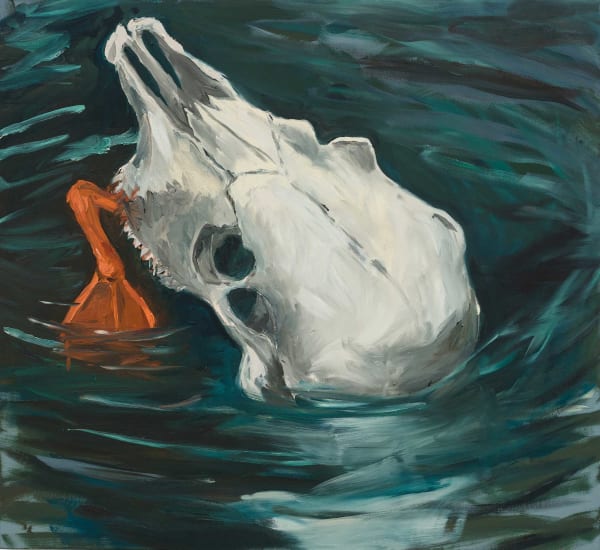
ARTRIO 2025
10 - 14 September 2025Read more -

ART BASEL MIAMI BEACH 2024
MIAMI BEACH CONVENTION CENTER, MIAMI, USA 4 - 8 December 2024Read more -
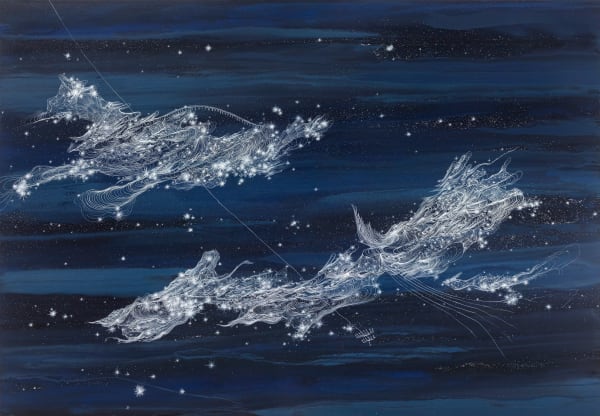
ART BASEL MIAMI BEACH 2023
MIAMI BEACH CONVENTION CENTER, MIAMI, USA 6 - 10 December 2023Read more -
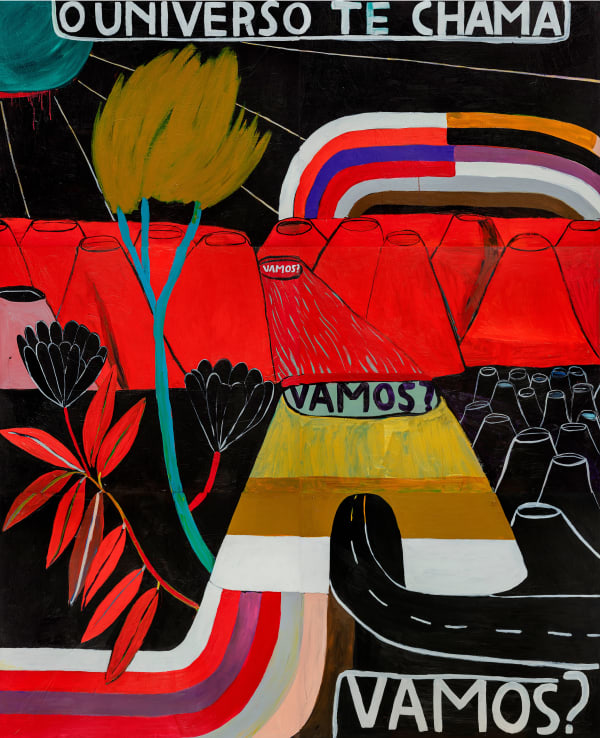
ARTRIO 2023
MARINA DA GLÓRIA, RIO DE JANEIRO, BRAZIL 13 - 17 September 2023Read more -
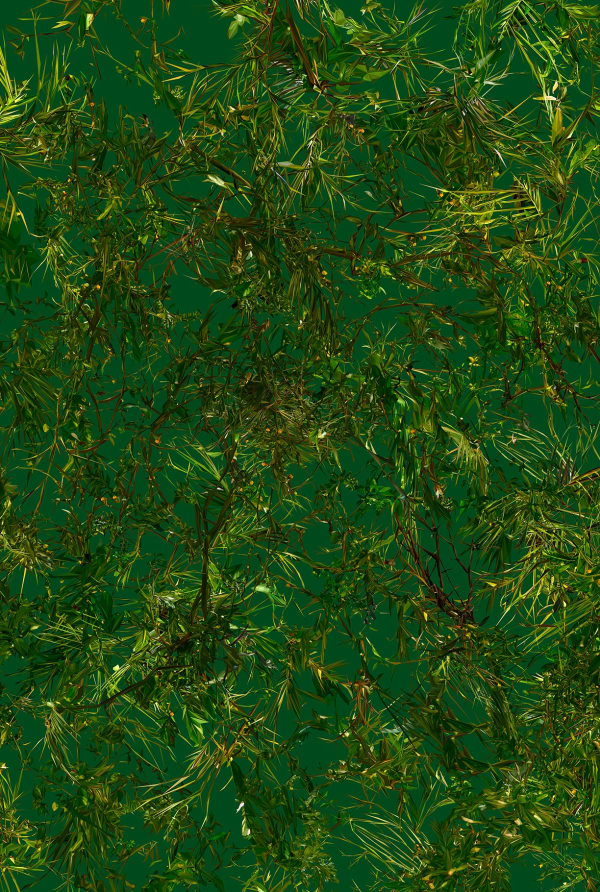
SP-ARTE 2023
PAVILHÃO DA BIENAL, SÃO PAULO, BRAZIL 29 March - 2 April 2023Read more -
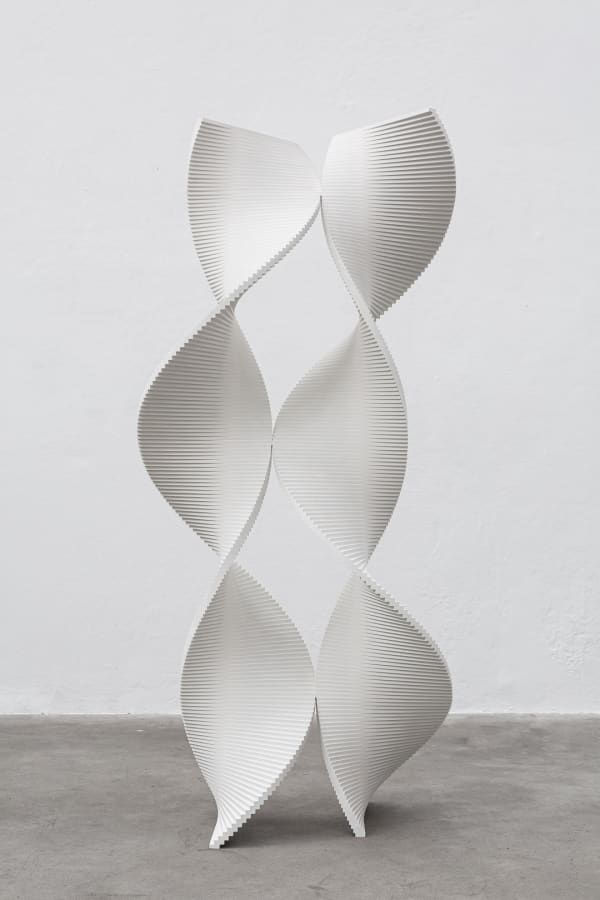
ART BASEL MIAMI BEACH 2022
MIAMI BEACH CONVENTION CENTER, MIAMI, USA 29 November - 3 December 2022Art Basel Miami Beach 2022 . Galleries and Kabinett . Featured Artists: Antonio Henrique Amaral, Assume Vivid Astro Focus, Eduardo Berliner, Fernanda Galvão, Lucas Simões,...Read more -
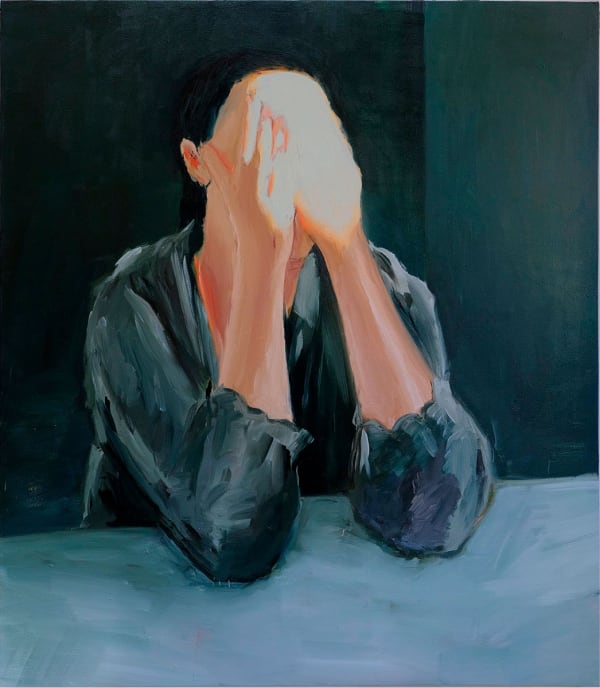
SP-ARTE 2022
PAVILHÃO DA BIENAL, SÃO PAULO, BRAZIL 4 - 10 April 2022Read more -

ART BASEL MIAMI BEACH 2021
MIAMI BEACH CONVENTION CENTER, MIAMI, USA 30 November - 4 December 2021Art Basel Miami Beach 2021. Booth G22. Kabinett: Antonio Henrique Amaral Featured artists: Ascânio MMM, Eduardo Berliner, Juliana Cerqueira Leite, Mariana Palma,O Bastardo, Sandra Cinto,...Read more -
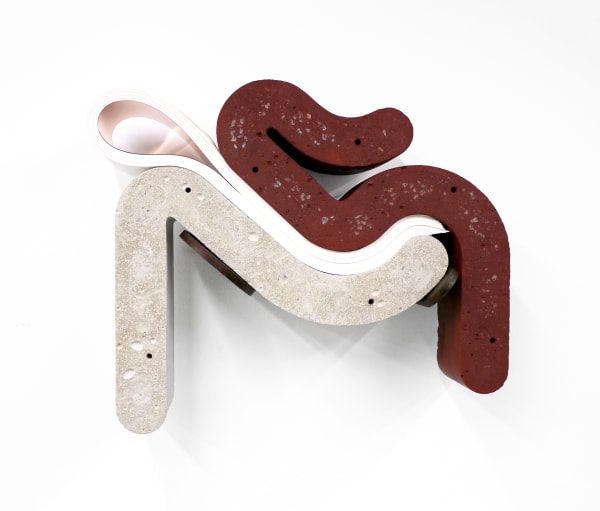
SP-ARTE 2021
ARCA, SÃO PAULO, BRAZIL 20 - 24 October 2021Read more

